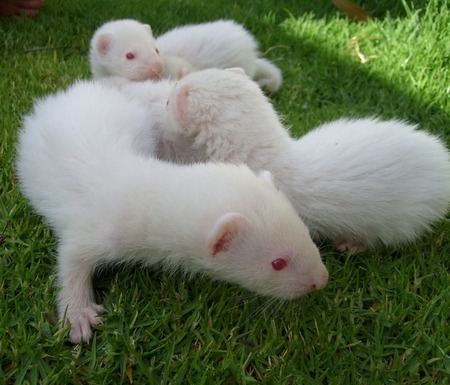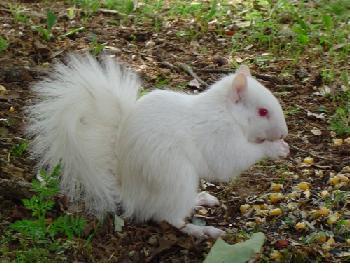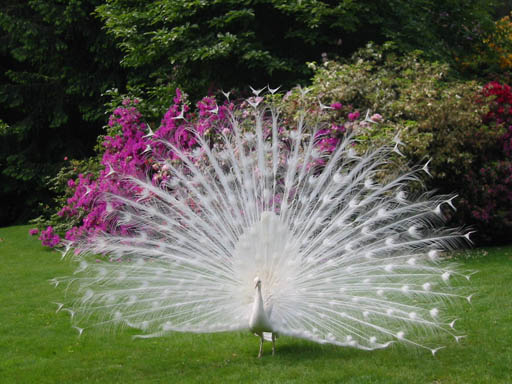|
|
|---|
Thursday, March 17, 2011
Today is St. Patrick's Day, and I am going to celebrate by telling you about a dog breed from Ireland. There are actually a bunch of Irish dog breeds, but the one I chose for today is the Irish Terrier.
Nobody knows when or how the Irish terrier got its start, but everybody agrees that it is one of the earliest terrier breeds. At first, Irish terriers could be any color, such as black-and-tan, gray, or brindle. But later the only possible colors got to be bright red, golden red, red wheaten, and wheaten.
Terriers are all very good at killing vermin such as rats and mice, and at first people just liked having Irish terriers because they were good at their job. So as long as they killed the vermin, it didn't matter what color the dogs were. But by late in the 19th century, people started wanting to put Irish terriers into dog shows, and then the terriers had to look a certain way. The first Irish terrier breed club began in Dublin in 1879, and this breed was the first one in the terrier group to be recognized by the English Kennel Club as a native Irish breed.
Irish terriers first went to the United states in the late 1800s, and they became sort of popular, at least for a while. But this breed has never been as popular to own as some other breeds, like for example chihuahuas or golden retrievers or dalmatians. The breed was recognized by the AKC in 1884, and the U.S. breed club started in 1896.
The average height of an Irish terrier is 18 inches, and the average weight is 25 to 27 pounds. These dogs do not have many health problems, but sometimes they can get cataracts or hypothyroidism. They usually live to be about 12-15 years old.
Irish terriers have a wiry overcoat and a softer undercoat. They also have long whiskers and a beard. If their ears are correct, according to the breed standard, they are V-shaped and a little darker in color than the rest of the dog's hair. The ears should fold toward the outside corners of the eyes. If a puppy's ears don't do this, they are glued to the top of its head so that they will have the right shape when the cartilage grows in. When Irish terriers are born, their tails get docked by about 1/4 of their length. In places where it is illegal to dock tails, they are left at the full length.
There are lots of things that Irish terriers can be used for, such as hunting, tracking, retrieving, ratting, guarding, police work, and military work. Also they are good at agility and obedience. They make nice family dogs, but they need plenty of exercise. Sometimes they don't get along with other dogs in the house -- especially dogs of the same sex -- or with cats. But usually they like to play with children.
Irish terriers are brave, energetic, and loyal. Also they are curious about stuff, and they are always ready for adventure. They like to dig, and they chase anything that moves, so they should not be off-leash in an unfenced area. Of course, the same is true for basenjis and greyhounds.
So that's your St. Patrick's Day dog breed for today. And now I will finish with an Irish blessing.
May your dish always be full of food,
Your yard be full of squirrels,
And your bed be soft and warm.
May your person pet you lots and lots,
And not make you go to vet very often!
Nobody knows when or how the Irish terrier got its start, but everybody agrees that it is one of the earliest terrier breeds. At first, Irish terriers could be any color, such as black-and-tan, gray, or brindle. But later the only possible colors got to be bright red, golden red, red wheaten, and wheaten.
Terriers are all very good at killing vermin such as rats and mice, and at first people just liked having Irish terriers because they were good at their job. So as long as they killed the vermin, it didn't matter what color the dogs were. But by late in the 19th century, people started wanting to put Irish terriers into dog shows, and then the terriers had to look a certain way. The first Irish terrier breed club began in Dublin in 1879, and this breed was the first one in the terrier group to be recognized by the English Kennel Club as a native Irish breed.
Irish terriers first went to the United states in the late 1800s, and they became sort of popular, at least for a while. But this breed has never been as popular to own as some other breeds, like for example chihuahuas or golden retrievers or dalmatians. The breed was recognized by the AKC in 1884, and the U.S. breed club started in 1896.
The average height of an Irish terrier is 18 inches, and the average weight is 25 to 27 pounds. These dogs do not have many health problems, but sometimes they can get cataracts or hypothyroidism. They usually live to be about 12-15 years old.
Irish terriers have a wiry overcoat and a softer undercoat. They also have long whiskers and a beard. If their ears are correct, according to the breed standard, they are V-shaped and a little darker in color than the rest of the dog's hair. The ears should fold toward the outside corners of the eyes. If a puppy's ears don't do this, they are glued to the top of its head so that they will have the right shape when the cartilage grows in. When Irish terriers are born, their tails get docked by about 1/4 of their length. In places where it is illegal to dock tails, they are left at the full length.
There are lots of things that Irish terriers can be used for, such as hunting, tracking, retrieving, ratting, guarding, police work, and military work. Also they are good at agility and obedience. They make nice family dogs, but they need plenty of exercise. Sometimes they don't get along with other dogs in the house -- especially dogs of the same sex -- or with cats. But usually they like to play with children.
Irish terriers are brave, energetic, and loyal. Also they are curious about stuff, and they are always ready for adventure. They like to dig, and they chase anything that moves, so they should not be off-leash in an unfenced area. Of course, the same is true for basenjis and greyhounds.
So that's your St. Patrick's Day dog breed for today. And now I will finish with an Irish blessing.
May your dish always be full of food,
Your yard be full of squirrels,
And your bed be soft and warm.
May your person pet you lots and lots,
And not make you go to vet very often!
0 Comments:
Subscribe to:
Post Comments (Atom)



















